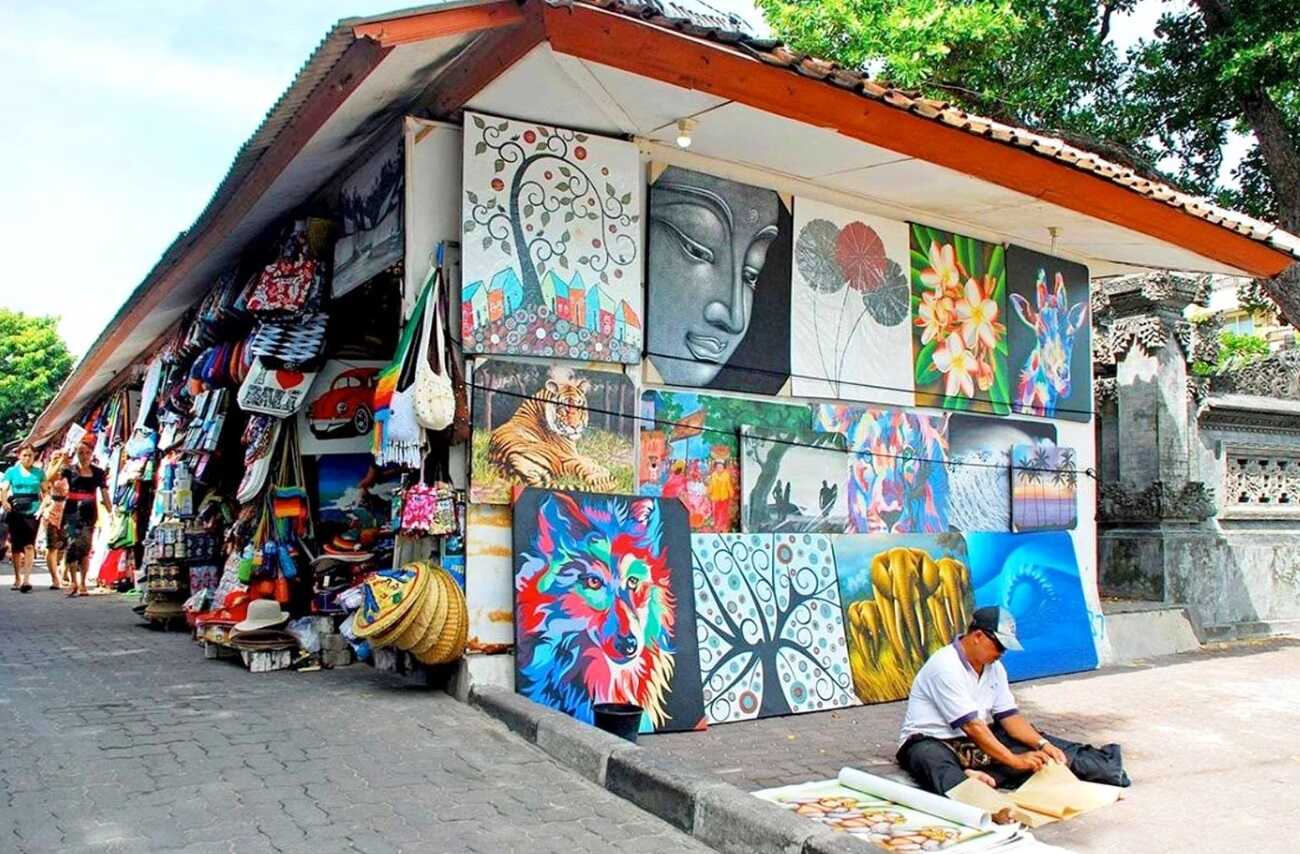Bali is a paradise that not only boasts stunning landscapes but also a rich cultural heritage that has captivated visitors from around the globe. The island’s artistic traditions, deeply rooted in its history and spirituality, have become an integral part of its identity today. Renowned for its exquisite craftsmanship, the “Island of Gods” is a haven for art enthusiasts seeking unique and authentic pieces to take home as souvenirs.
From intricate paintings that depict vibrant scenes of everyday life and mesmerizing landscapes to elaborately carved wood sculptures that embody the island’s deep-rooted beliefs and traditions, Bali offers a treasure trove of artistic wonders. The island is also home to skilled artisans who meticulously craft ceramics, textiles, and jewelry that showcase the perfect blend of tradition and modernity.
These art forms not only reflect Bali’s cultural diversity but also serve as a testament to the island’s unwavering commitment to preserving its artistic legacy for generations to come. With each piece telling a story of Bali’s past and present, visitors are sure to find a special memento to cherish long after their journey through this enchanting island.
In this article, we’re going to talk about some of the famous artworks and handicraft masterpieces that you can consider as rare gems from your trip.
Let’s get started…
Balinese Paintings
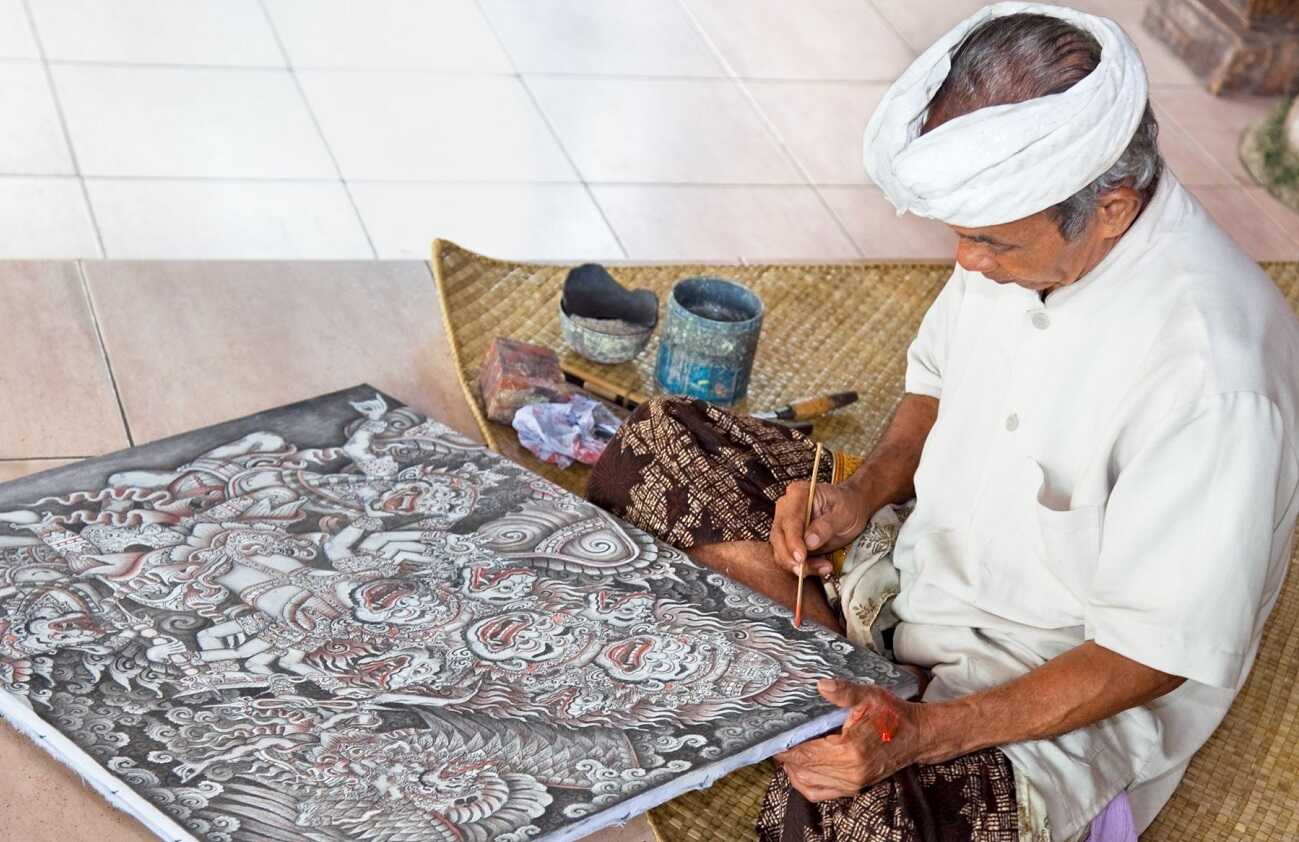
Balinese paintings provide a mesmerizing glimpse into the island’s rich heritage and artistic expressions, blending diverse styles to create timeless masterpieces and a way to explore and experience Balinese culture the authentic way possible. Drawing inspiration from Hindu mythology and local folklore, Balinese art encompasses traditional, Kamasan-style, and modern influences, each contributing a distinct flair to the artistic panorama.
Traditional Balinese paintings, known for their intricate details and vibrant hues, often depict scenes from religious epics. Conversely, Kamasan-style paintings, characterized by gold leaf highlights and complex patterns, exhibit a meticulous artistic technique which often depict popular cultural scenes, like the Wayang Kulit. Modern styles infuse western influences, adding a contemporary twist to traditional themes.
For art enthusiasts seeking authentic Asian or Indonesian pieces, Balinese paintings are highly recommended for their cultural significance and visual allure. The renowned Ubud Art Market serves as a top destination for purchasing these artworks, offering a diverse array of pieces and the opportunity to engage with local artists. These paintings are not only treasured investments but also exquisite reflections of the island’s artistic legacy.
Wood Carvings
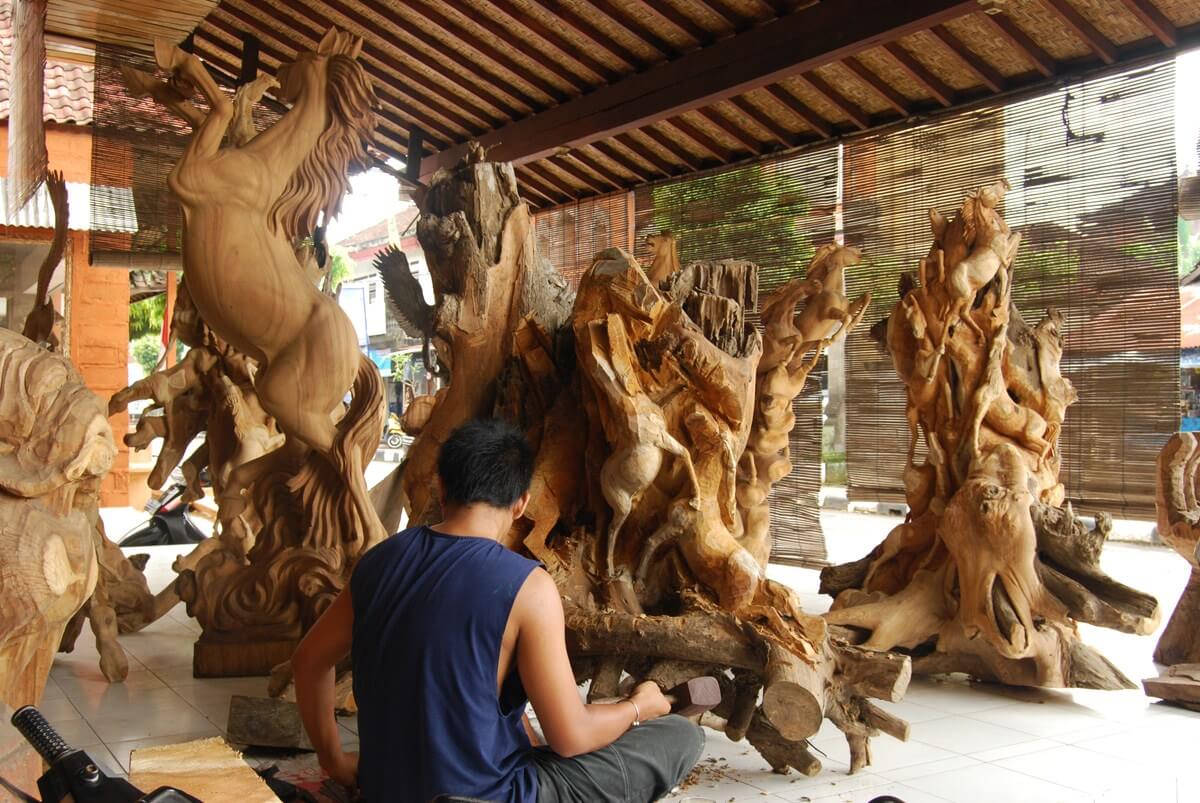
When it comes to Balinese wood carving, the enchanting town of Ubud emerges as the beating heart of this ancient craft. Here, talented artisans come together in “banjars,” (guilds) honing their skills to produce intricate and culturally-rich wood carvings.
Mas Village is a particularly noteworthy spot to find genuine Ubud wood carvings, characterized by intricate designs, detailed motifs inspired by Balinese culture, and impeccable finishing. You should consider buying Balinese wood carvings not only for their beauty, but also as a way to support local artists and bring a piece of Bali’s rich culture back home.
Related article: Things to do in Ubud, Bali – Retreat, Nature & Culture
Textiles
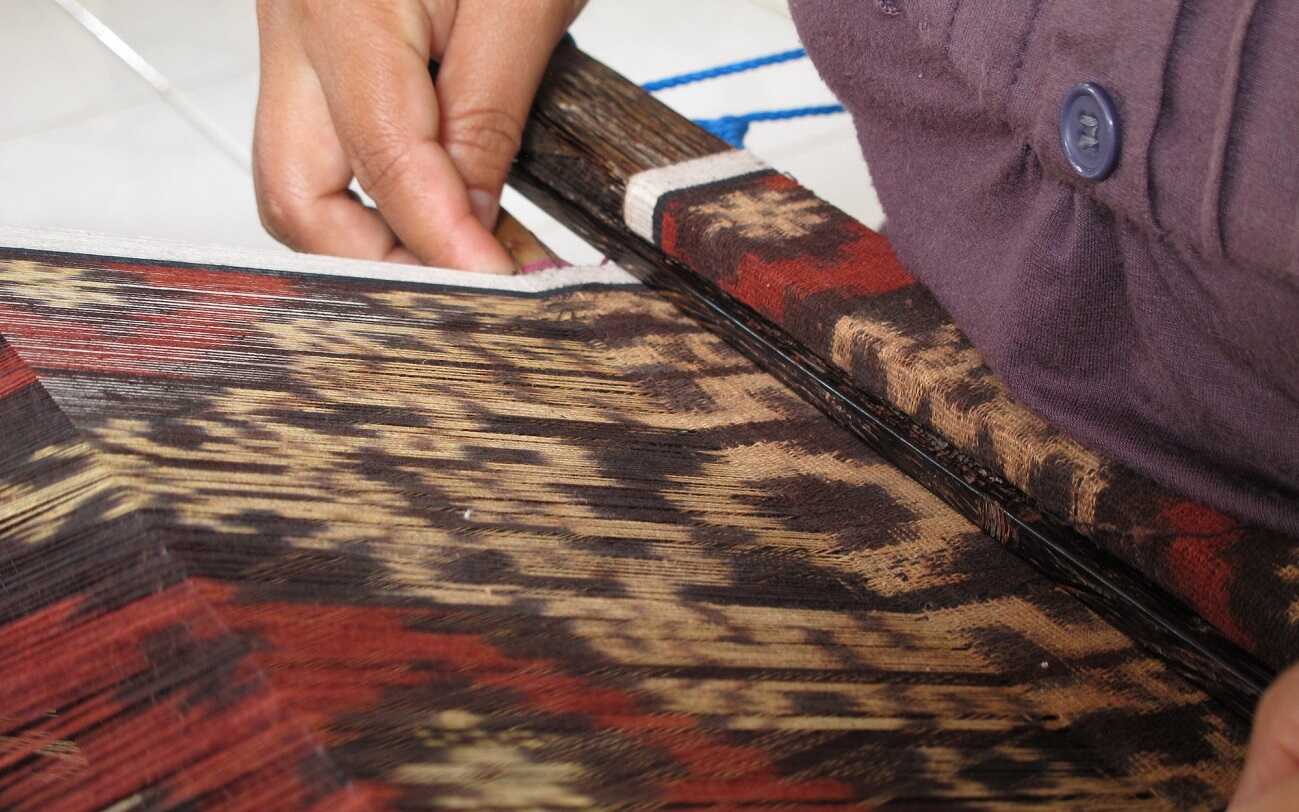
Balinese textiles are a vibrant reflection of the island’s rich cultural heritage, known for their intricate designs and meticulous craftsmanship.
The Endek fabric and Batik, one of the best souvenirs to bring home from Bali, are crafted in Sidemen village. They display intricate motifs woven into luxurious silk or cotton, often adorning ceremonial garments or interior decor. Gringsing fabric, originating from Tenganan, showcases skilled double ikat techniques, resulting in captivating geometric patterns.
On the other hand, Rangrang textiles hailing from Nusa Penida feature lively stripes and serve multiple practical purposes. The symbolic Poleng cloth, worn by Kecak dancers, represents harmony through its striking black and white checkerboard design.
Exploring Balinese textiles also offers a glimpse into the island’s artistic traditions and creative ingenuity.
Silver Jewelry
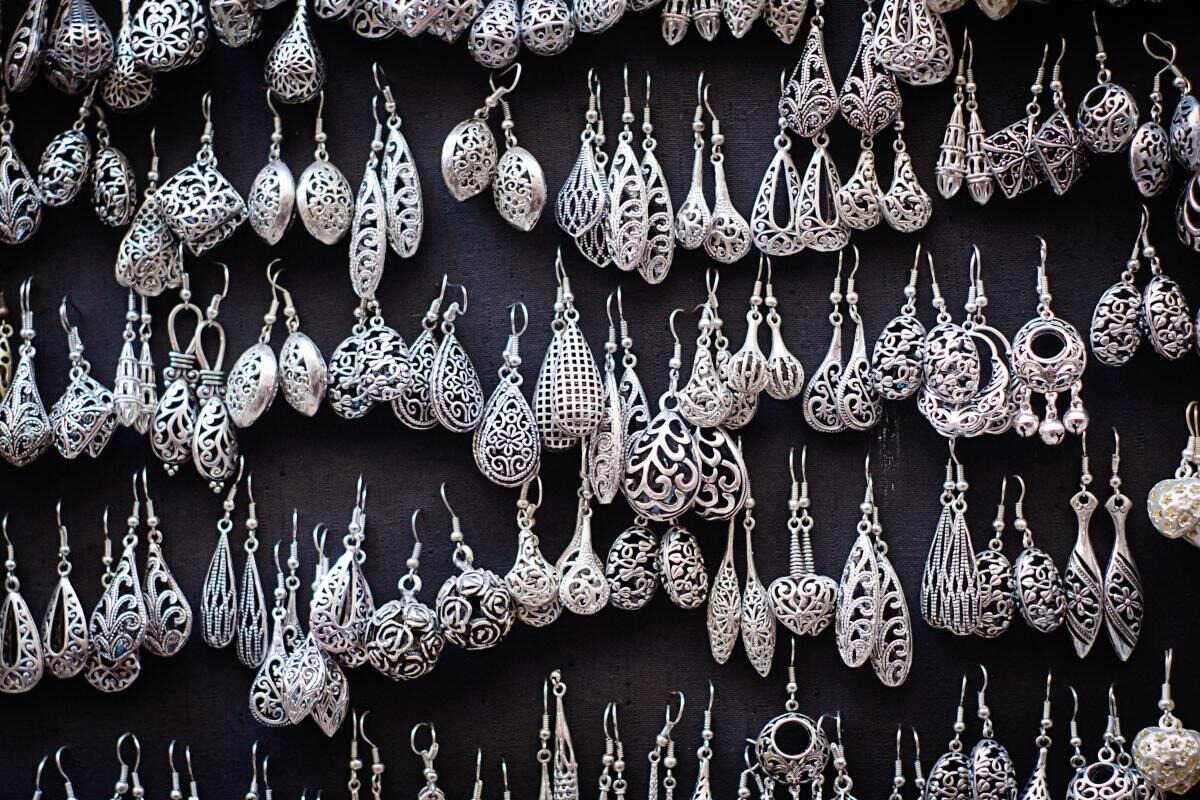
Balinese silver jewelry is a timeless craft that reflects the island’s rich cultural heritage. The intricate designs and exquisite craftsmanship have made it a sought-after souvenir for visitors.
The history of Balinese silver jewelry dates back centuries, with influences from Hindu, Javanese, and Chinese traditions. Skilled artisans in Celuk village are known for their expertise in Jawan and filigree techniques, creating pieces with intricate patterns and delicate details.
For a truly authentic experience, consider purchasing directly from local jewelry makers in Celuk village. Not only will you find reasonable prices compared to nearby shops, but you’ll also play a part in safeguarding the legacy of jewelry-making in this enchanting region. Just make sure to remember some useful words and phrases so you can communicate with the locals more effectively.
Final Thoughts
Overall, another way of knowing Bali aside from its natural and man-made wonders as well as their cuisine is through their local products. In fact, their artworks and handicrafts are truly one of a kind. And it’s all the more worthwhile to have some of these items as you go back to your home country. Suppose you are not a collector but someone who appreciates art. In that case, it’s also very common to see these art pieces in local establishments and accommodations, especially in many hotels and luxury villas in Bali. It’s basically everywhere on the island for you to enjoy.
–
Featured Image: Hotels.com


